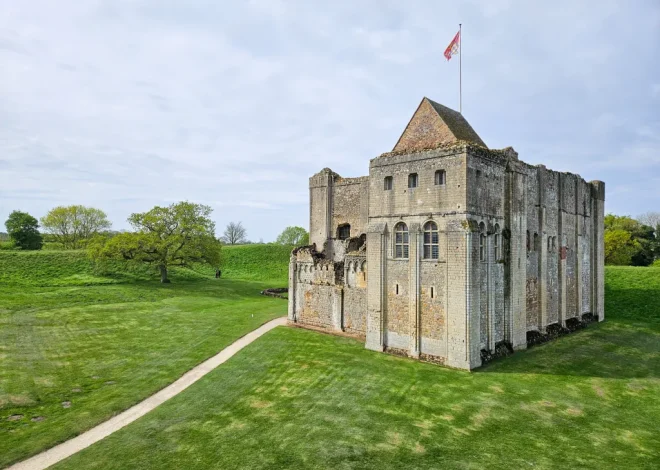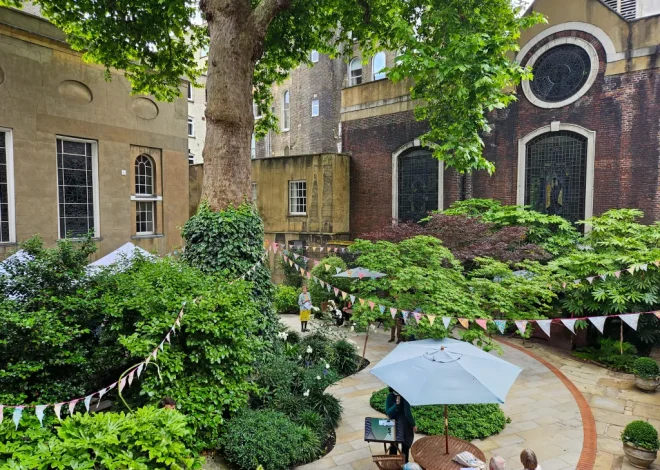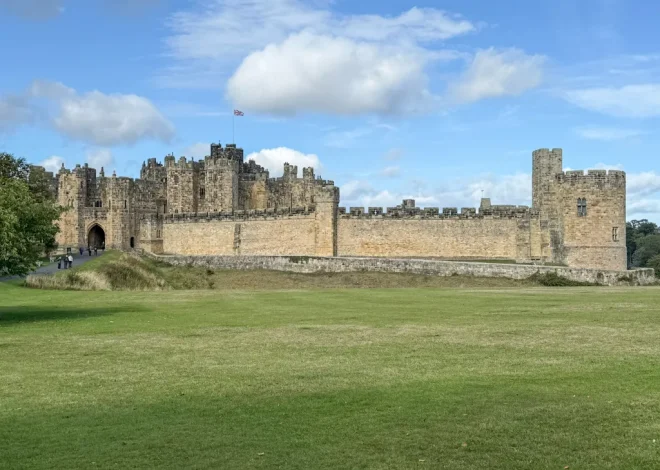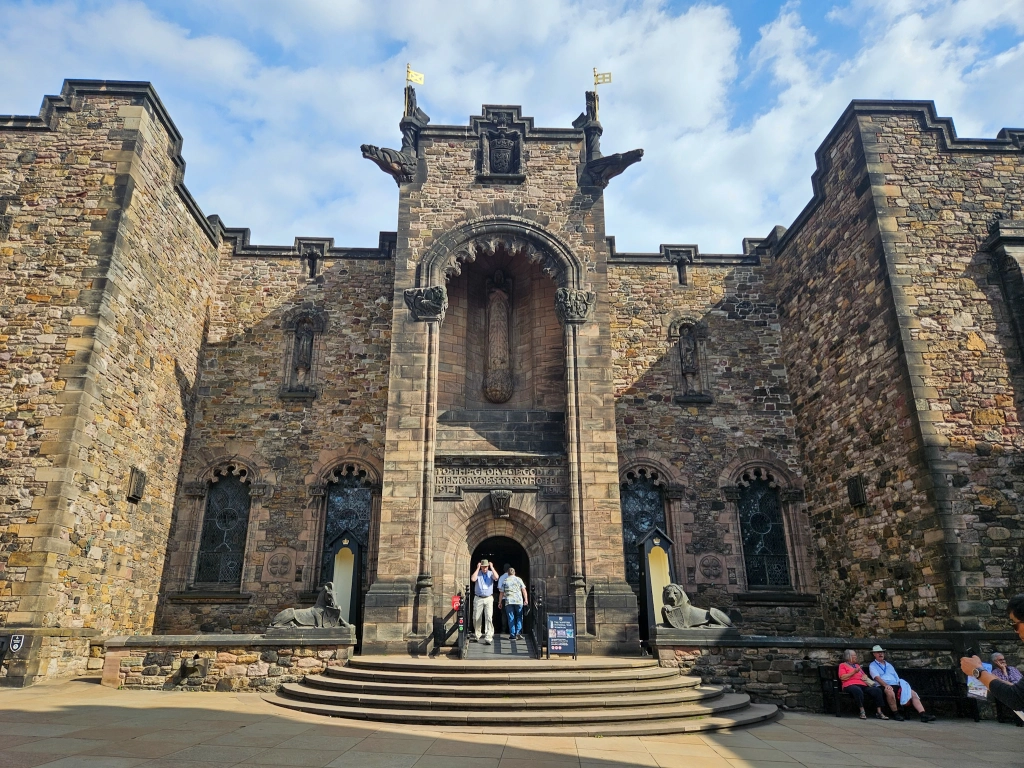
Edinburgh Castle: A Visitor Guide
Edinburgh is an amazing city; it’s atmospheric, packed with history and full of glorious architecture. Without a doubt its most famous resident is its castle, perched atop a hill which has dominated the skyline of Scotland’s capital for centuries.
I was so excited for my visit, but (and I hate to write this) I found it to be a bit of an anti climax. Despite getting there for opening, it was absolutely packed. There were tour groups galore, it was a baking hot day, I hadn’t slept well and I was a bit miffed that despite having a timed entry ticket I had to queue for 25 minutes before even getting in!
I didn’t love it, but I don’t think that was really the Castle’s fault. In fact, there is so much to see and do at the Castle that I still want to take you on a tour. Let’s go!
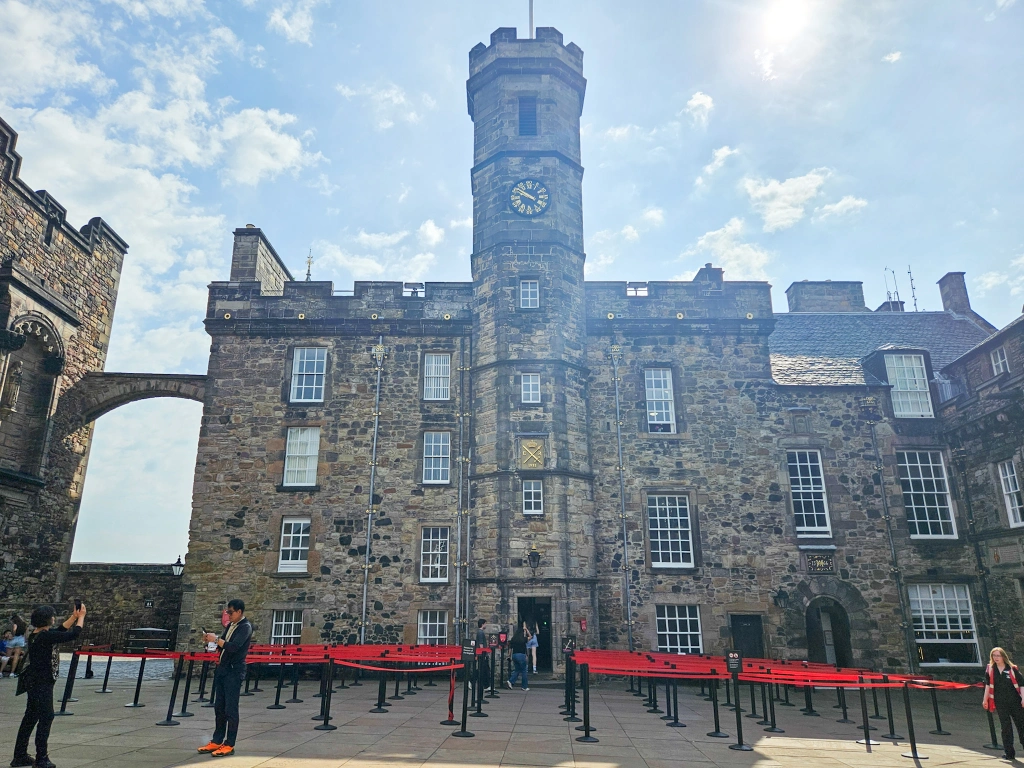
Visitor Information
Opening Hours:
- April – September: 9:30 AM – 6:00 PM (last entry 5:00 PM)
- October – March: 9:30 AM – 5:00 PM (last entry 4:00 PM)
- Closed on December 25th and 26th.
Ticket Prices (2025):
- Adults: £20 (I think this is pretty extortionate, especially as all of Edinburgh’s Museums are free to enter)
- Children (5–15): £12
- Seniors (65+): £16
- Family tickets and online discounts are available.
- Book in advance online to avoid queues and ensure availability during busy times.
Arrive by foot along the Royal Mile, or if you have mobility issues, you can get a car up to the castle to drop you off, but you cannot park there.
Top Tip: I strongly recommend arriving for 9.30am during the week; by 10am it’s absolutely heaving, even outside of summer peak tourist season!
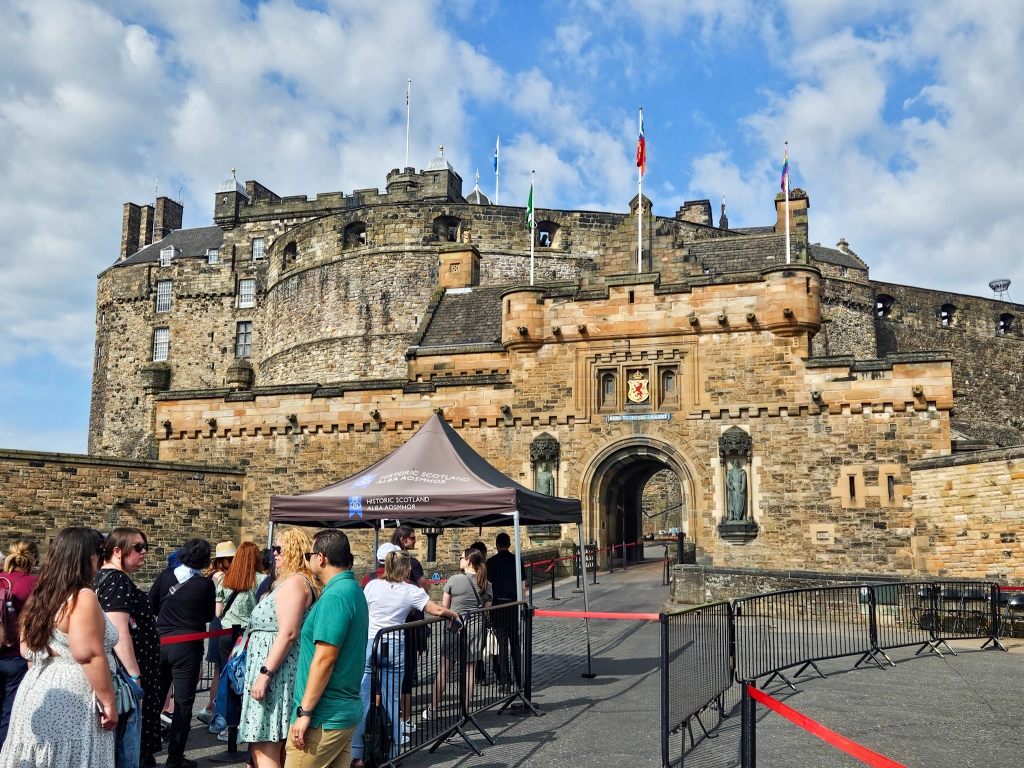
What to see and do in Edinburgh Castle
Argyle Battery
Arriving at the castle will bring you up to the Battery, with beautiful views out over the city. It’s also home to The One O’Clock Gun, fired every day (except Sundays) at 1pm; a long-standing time signal tradition.
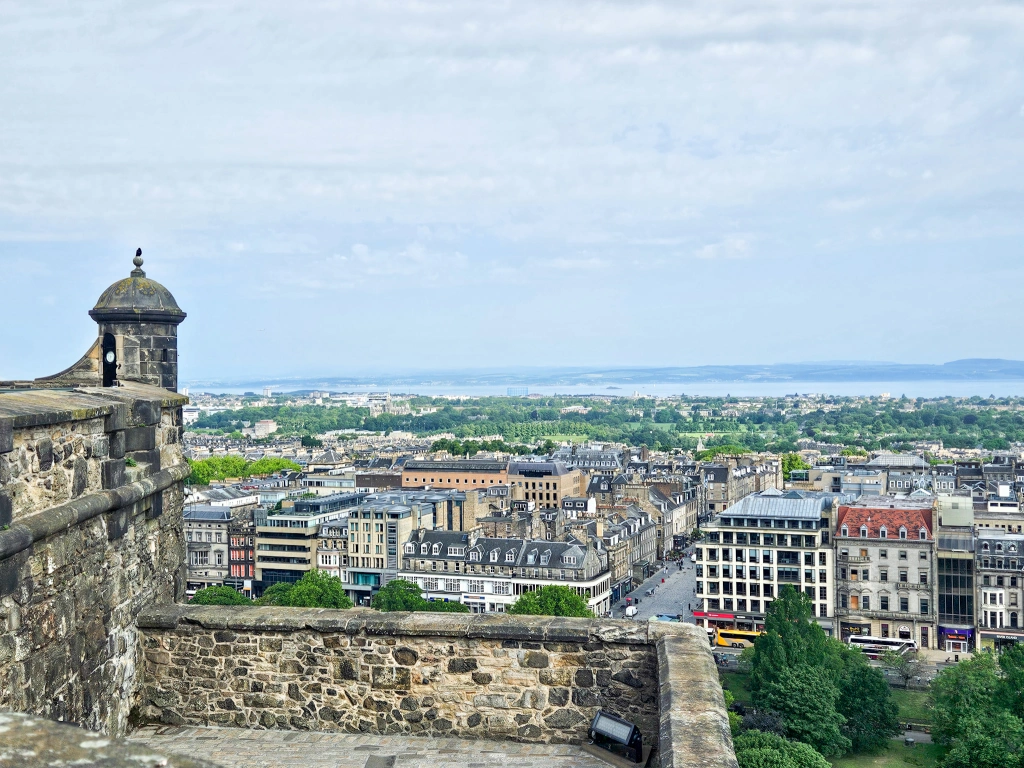
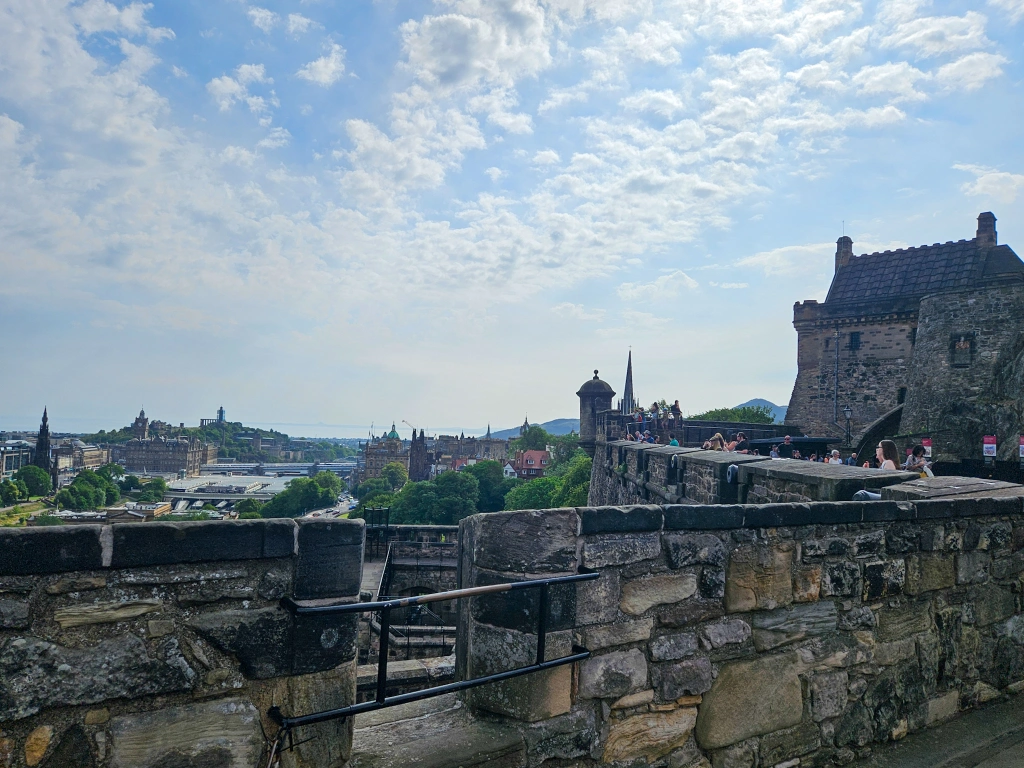
Hospital Square & The National War Museum
Just down from the Argyle Battery is a lovely square, which houses The National War Museum. The Museum is well worth visiting to learn more about Scotland’s history of war, largely from the 1600s onwards.
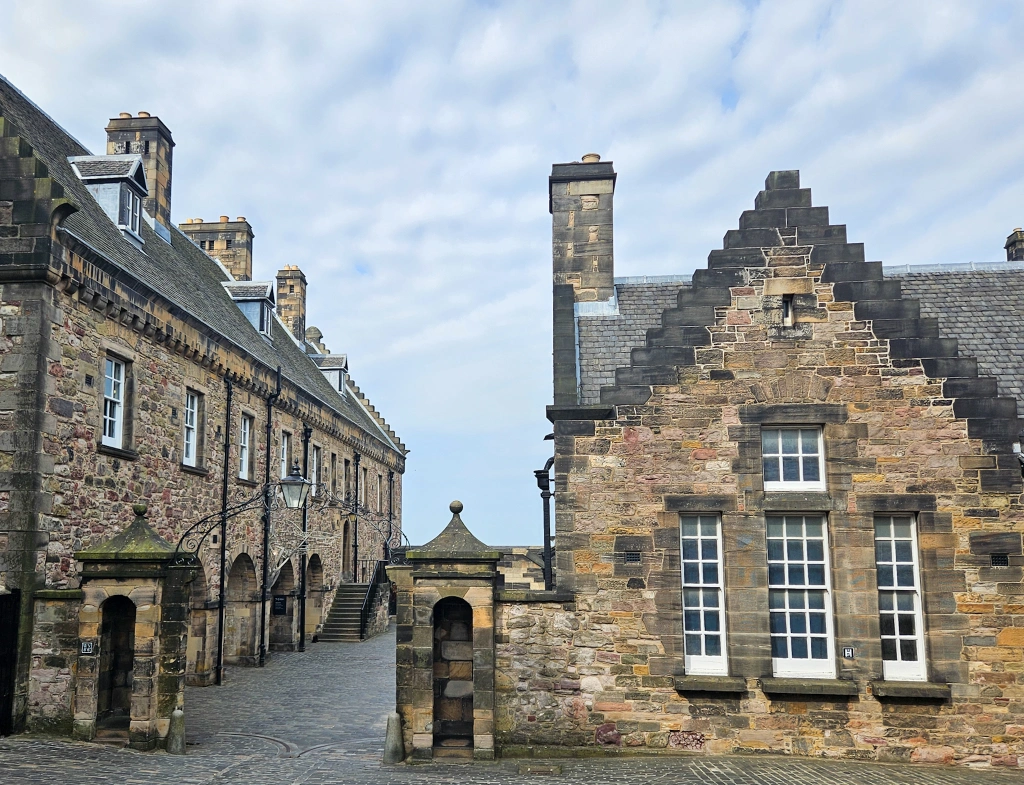
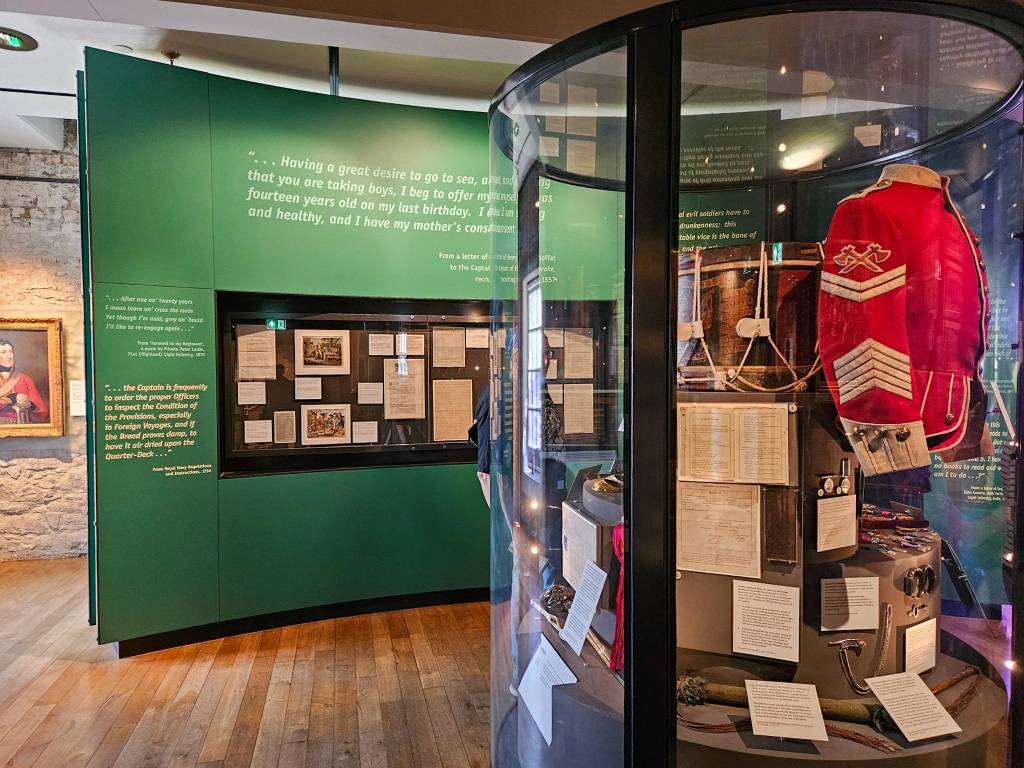
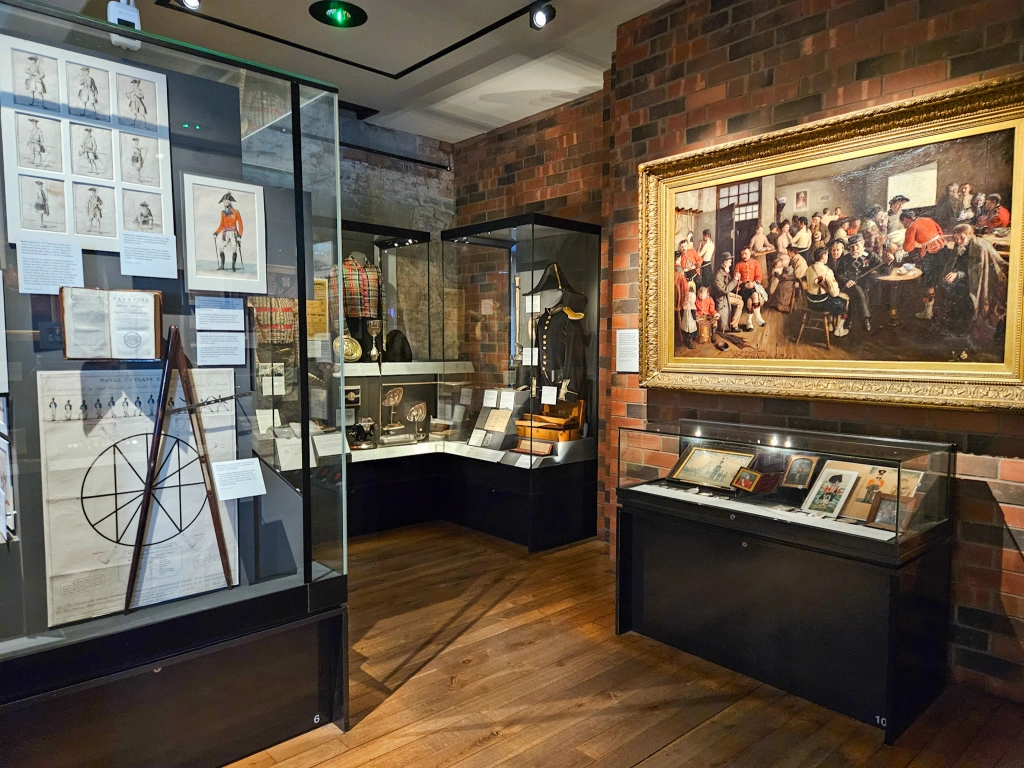
Crown Jewels of Scotland & The Royal Apartments
Scotland’s Crown Jewels are housed in the Royal Palace, along with the ancient coronation stone. You can’t take photos of them, but there’s a sword, sceptre and a crown. The sword is absolutely huge!!
You can also step into the rooms once used by Mary, Queen of Scots, including the chamber where James VI was born. For the history buffs amongst you, James VI was born a Scottish King, but also later became King of England (so he was both James VI and James I, depending on the country)!
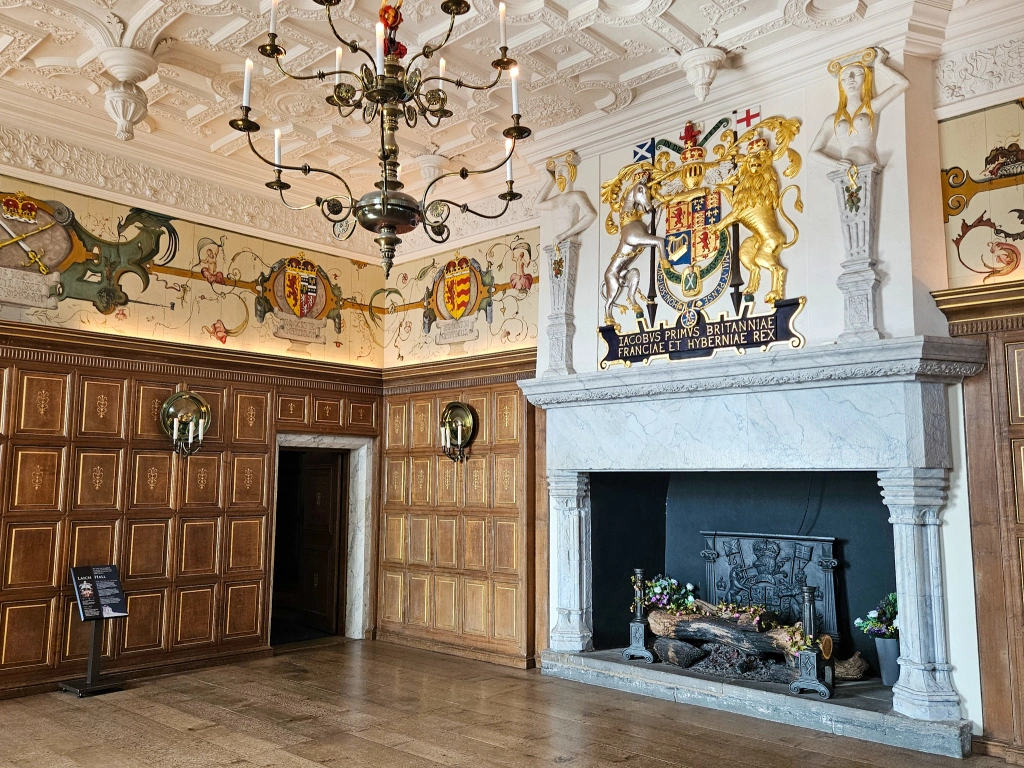
St. Margaret’s Chapel
The oldest surviving building in Edinburgh, built in the 1100s by King David I for his mother, is a beautiful little chapel which you can still go inside and enjoy.
It was at this point in the day I was so glad my husband wasn’t with me or he’d have punched someone. The chapel is small, and there are benches lining each side of the altar arch – generally you sit out the way and let others walk to the altar to see it from behind the rope that you can see in my picture below. Not this woman. She just stood at the rope for an age, turned around, went back again, then STEPPED OVER THE ROPE and sat on the bench you can just see in my photo. I mean, come on!
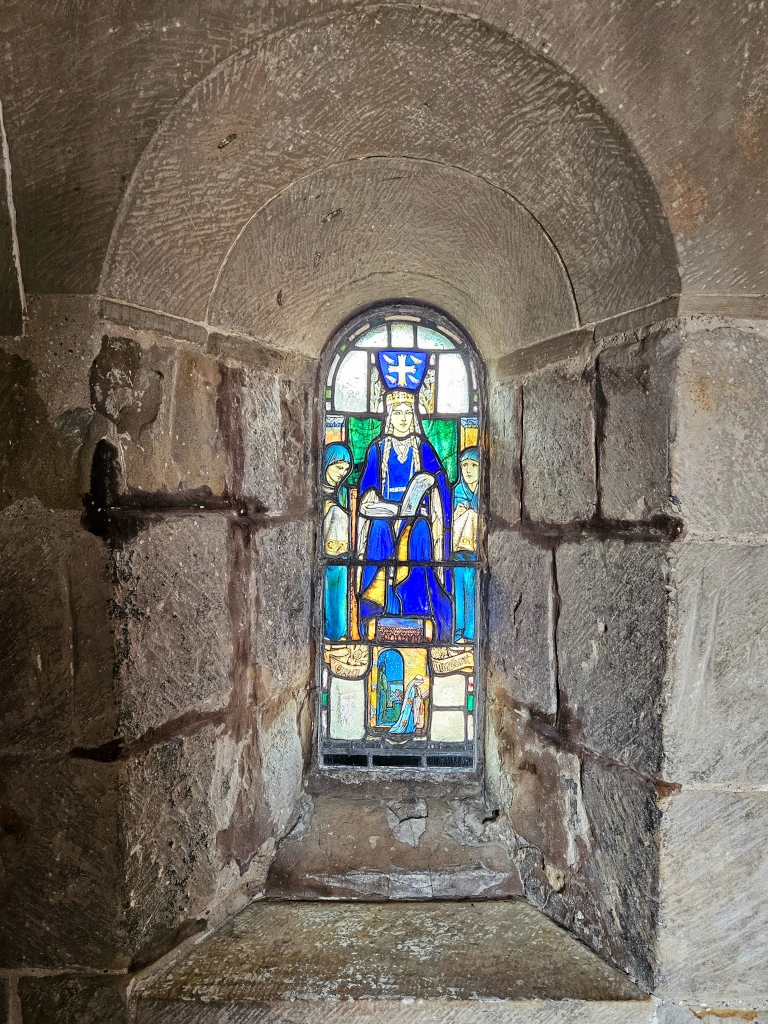
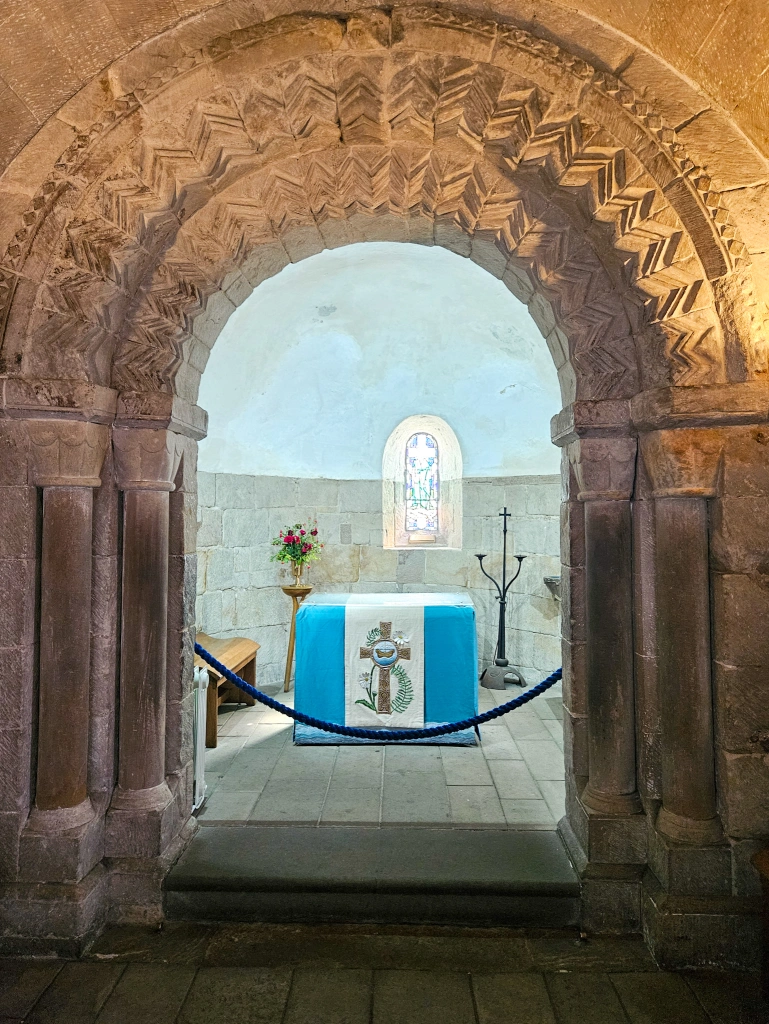
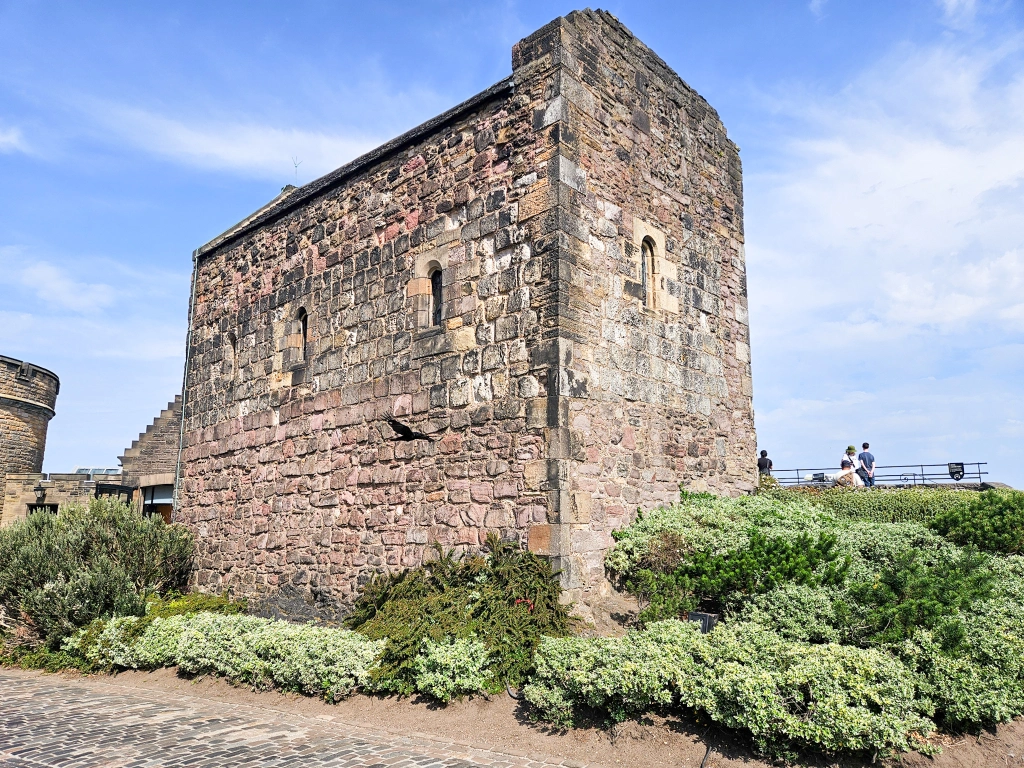
The Great Hall
A majestic hall completed in 1511, with medieval weaponry and suits of armor on display. I was super lucky and actually managed to get it to myself, meaning it was my favourite part of the day.
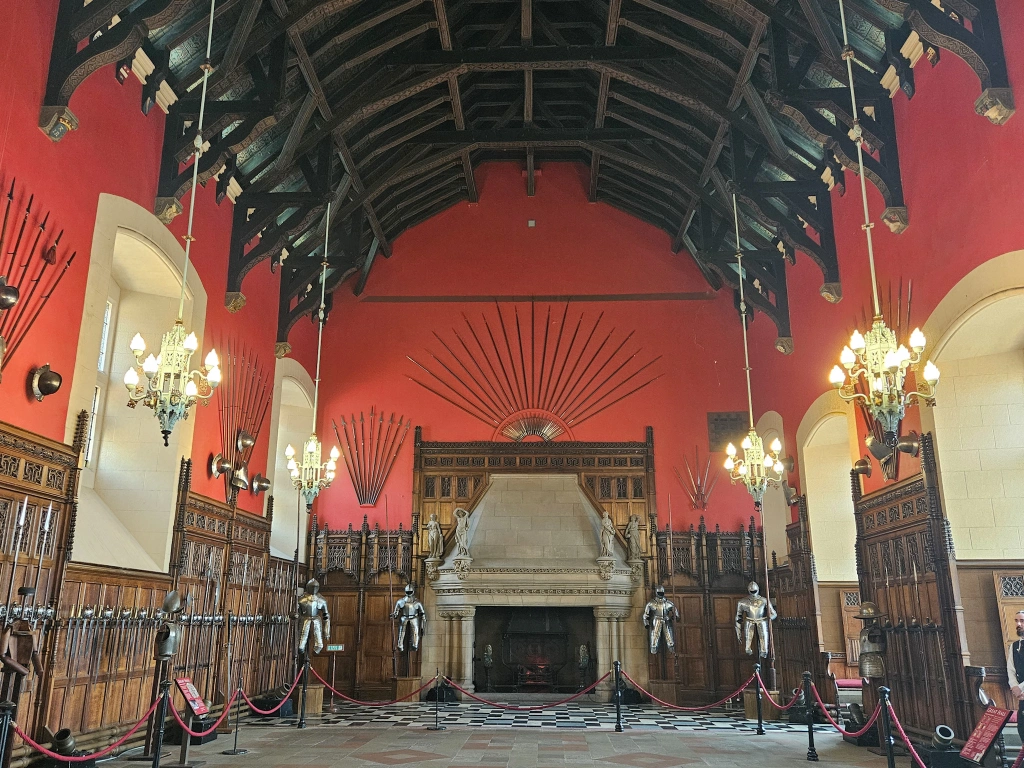
Museum of the Royal Scots & The Royal Scots Dragoon Guards Museum
These two Museums sit opposite each other and tell the stories and history of Scotland’s most famous army regiments. It’s fascinating to learn about them fighting all over the world, and their participation in major wars like WW1, WW2 and Crimea. I enjoyed these museums and spent a good hour or so in each.
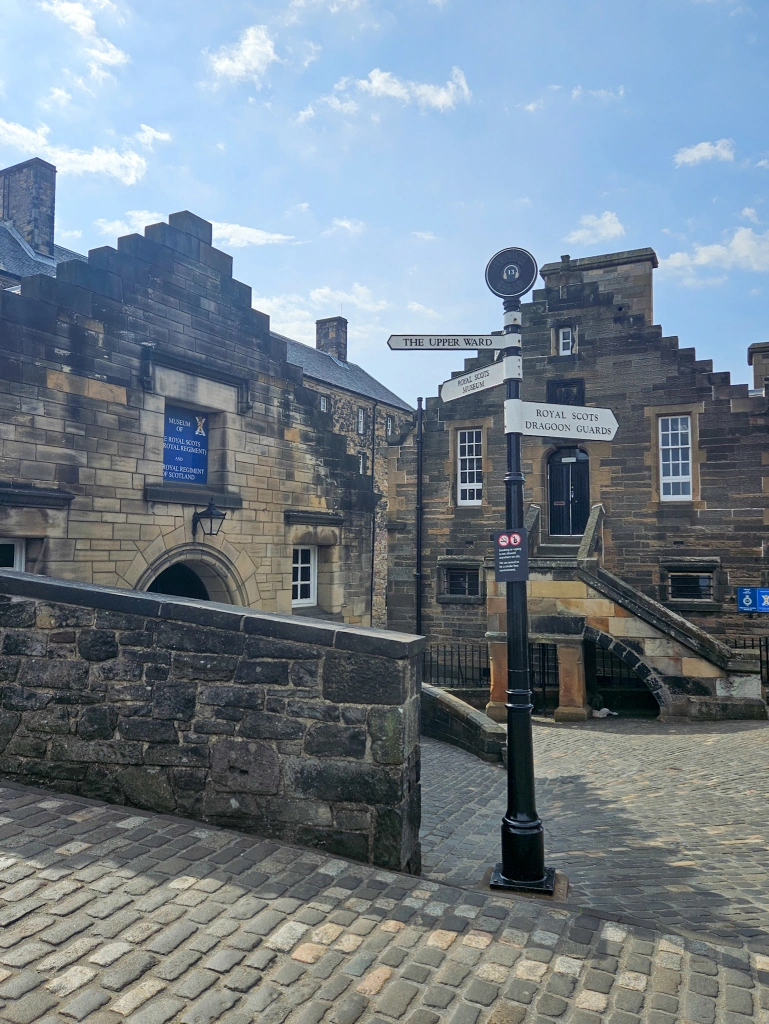
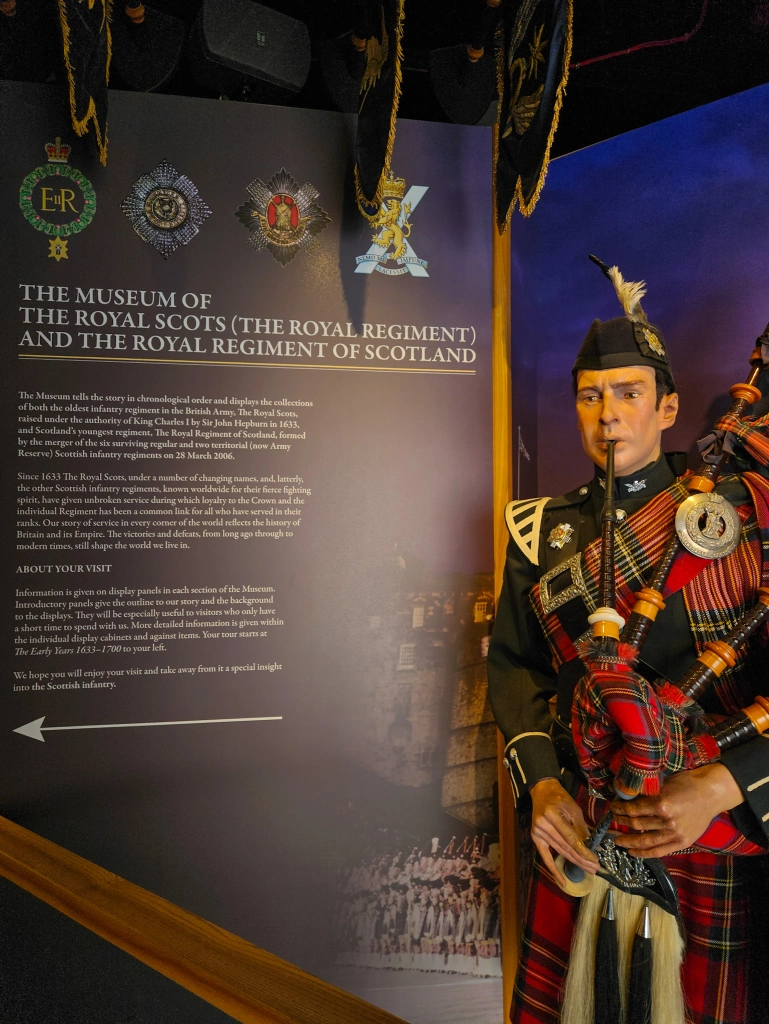
Prisons of War & Military Prison
Over the years, hundreds of people have been held as prisoners of war at Edinburgh castle, including people captured during the Napoleonic Wars, WW1 and WW2. You can walk through some of the cells, and learn about what daily life would have been like for the PoWs today.
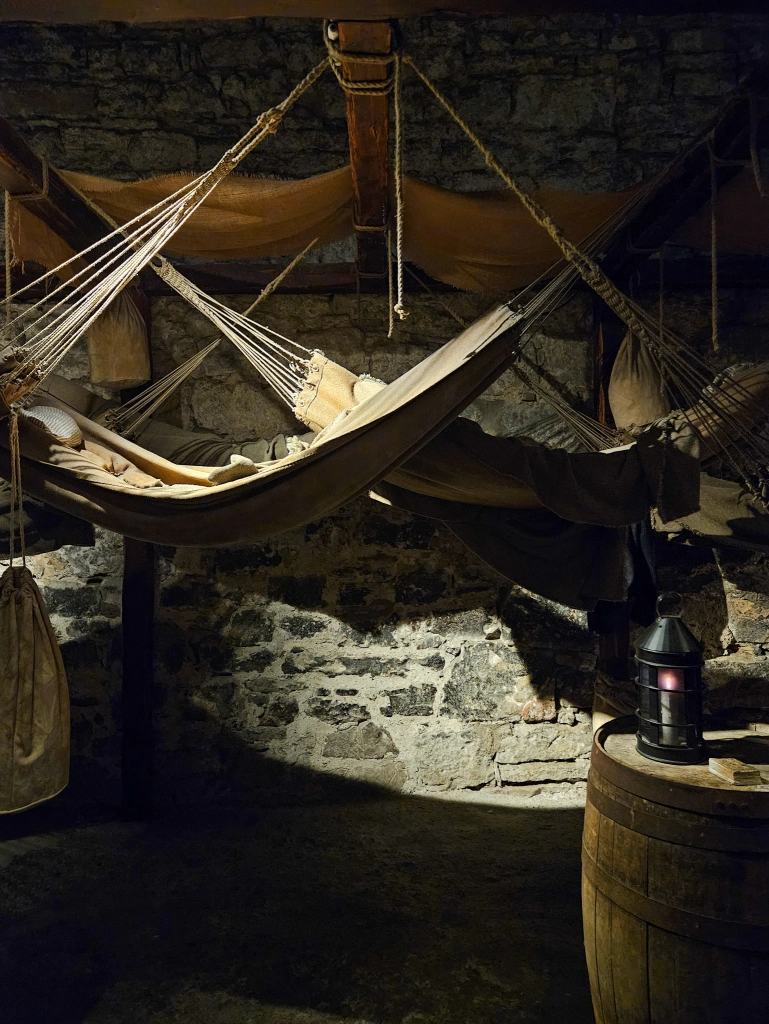
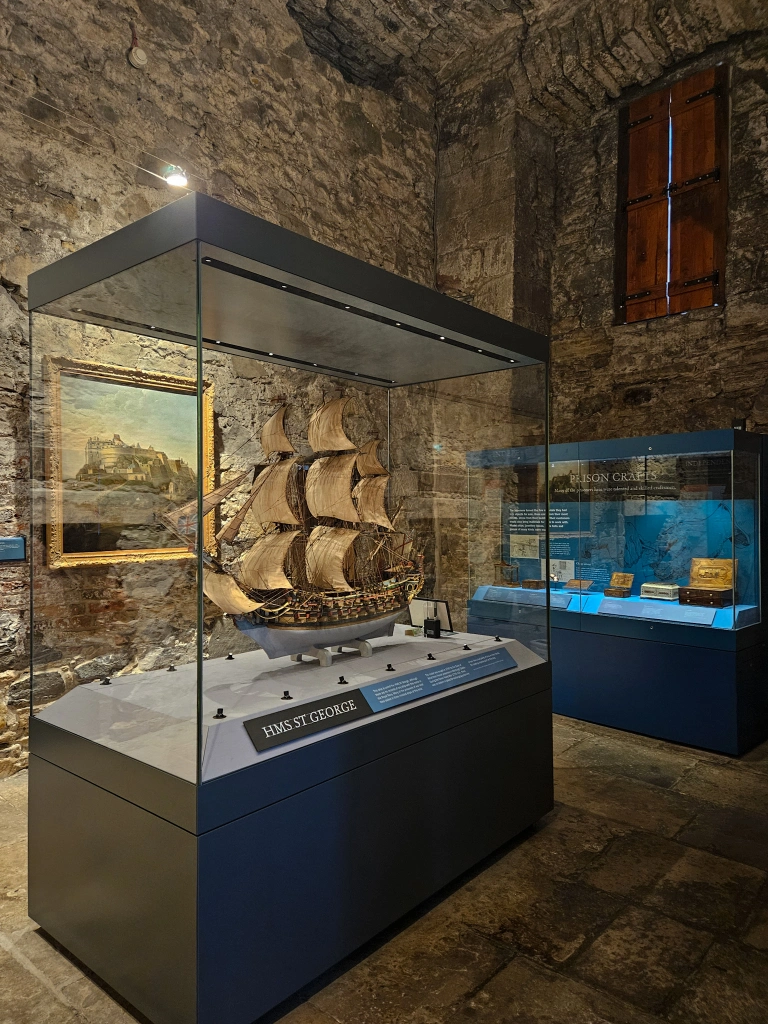
National War Memorial
This is another place where photos are not allowed inside (it is stunning, and a grand way to pay tribute to those who died fighting for their country during times of war). Even the outside is still pretty beautiful.
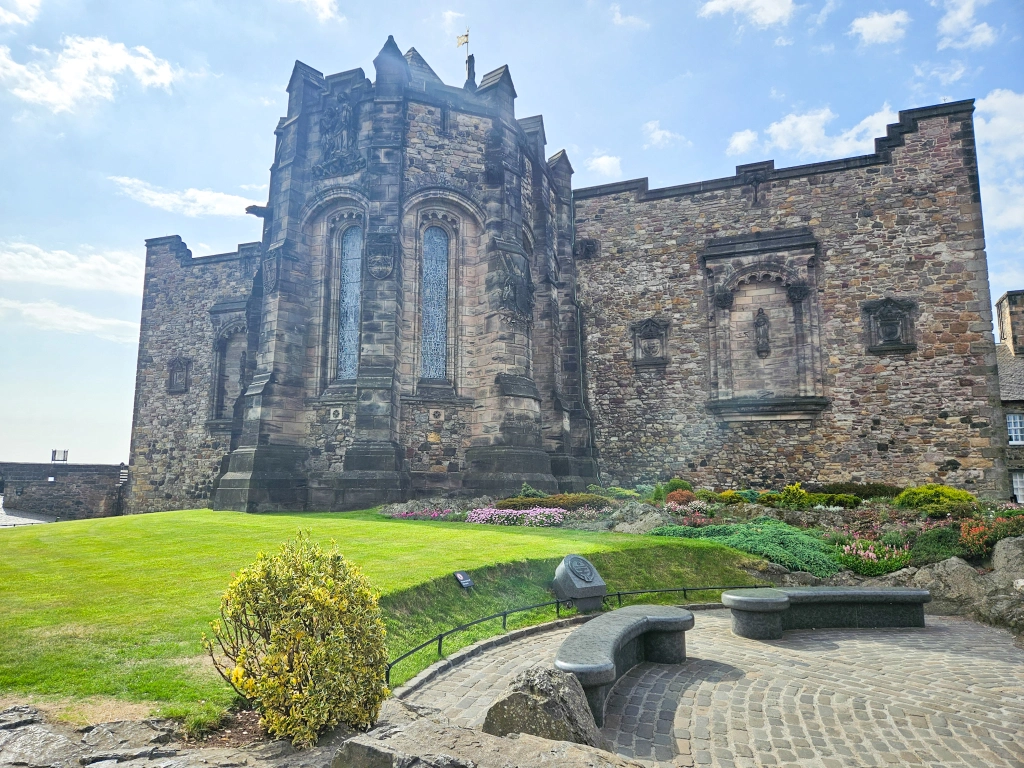
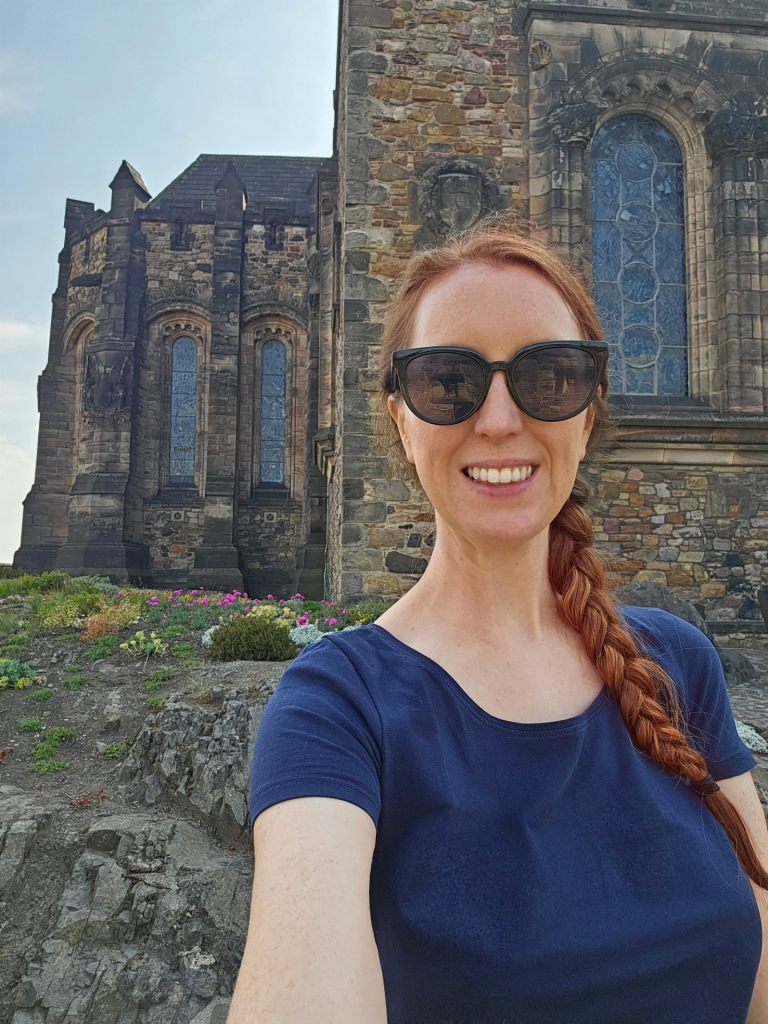
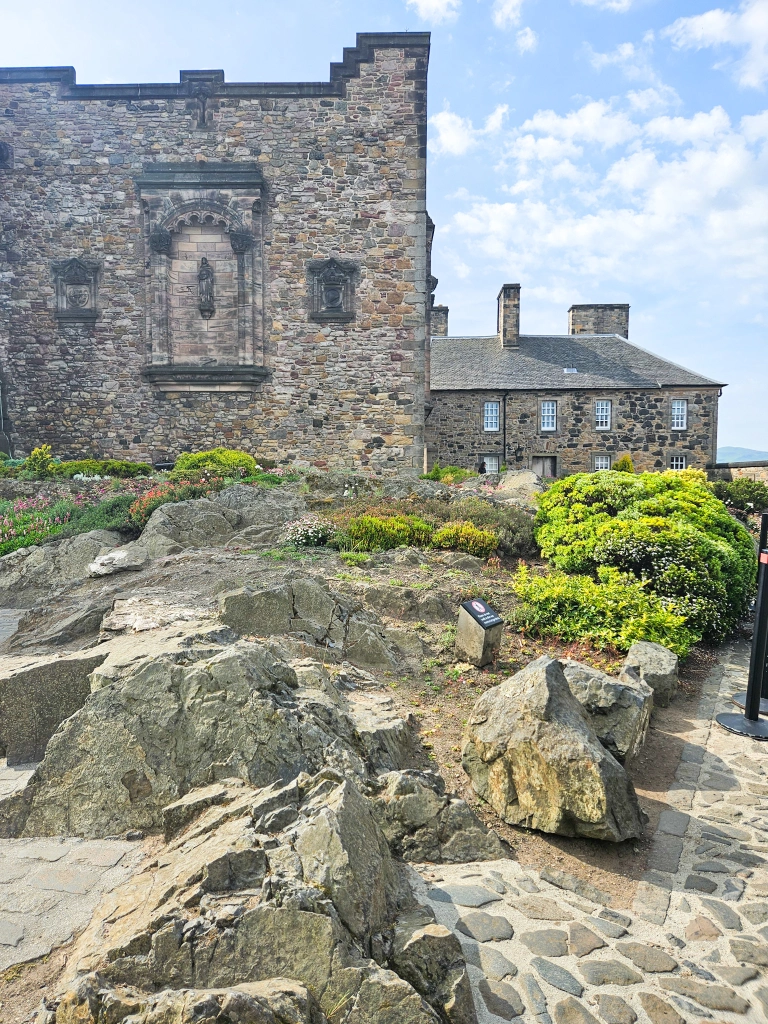
Tips for Visitors
- Wear comfortable shoes: The cobbled paths and steep climbs require good footwear.
- Layer up: Weather can change quickly. I went from sweating to freezing during the course of my visit.
- Allow 2–3 hours minimum to explore fully.
- Photography is allowed in most outdoor areas, but restricted in some interiors (e.g. The Scottish Crown Jewels).
- Audio guides and guided tours are available and add worthwhile historical context.
- There is a Café on site, as well as numerous spots to buy refreshments.
Interesting Fact: The Castle actually sits on top of an extinct volcano!
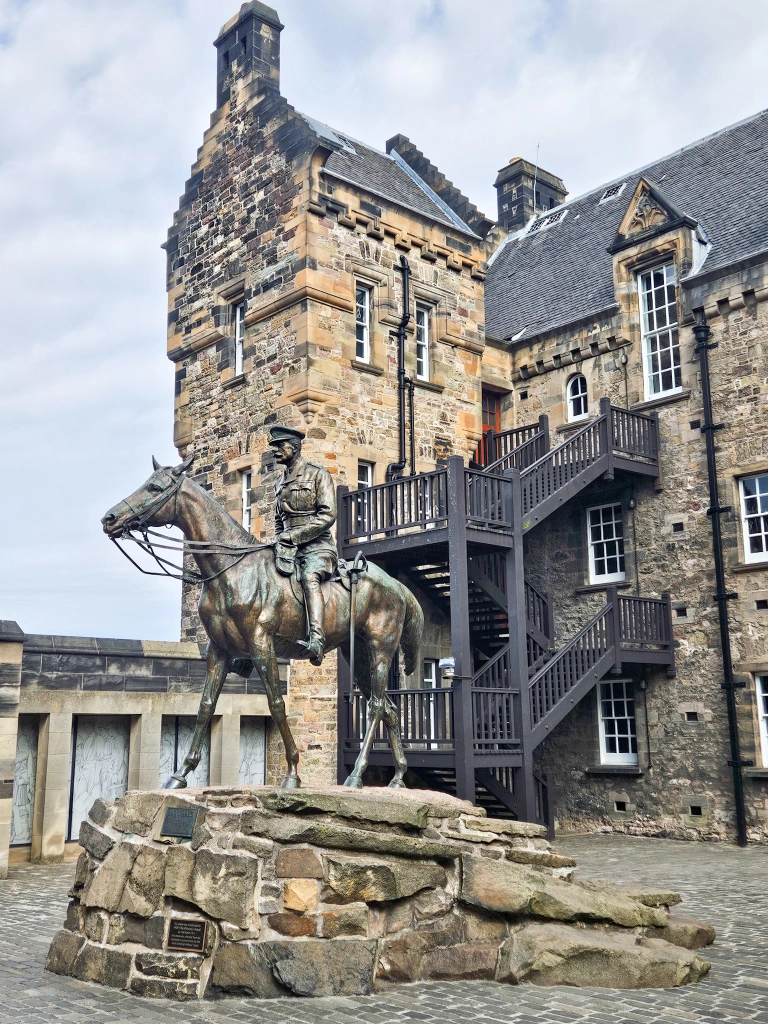
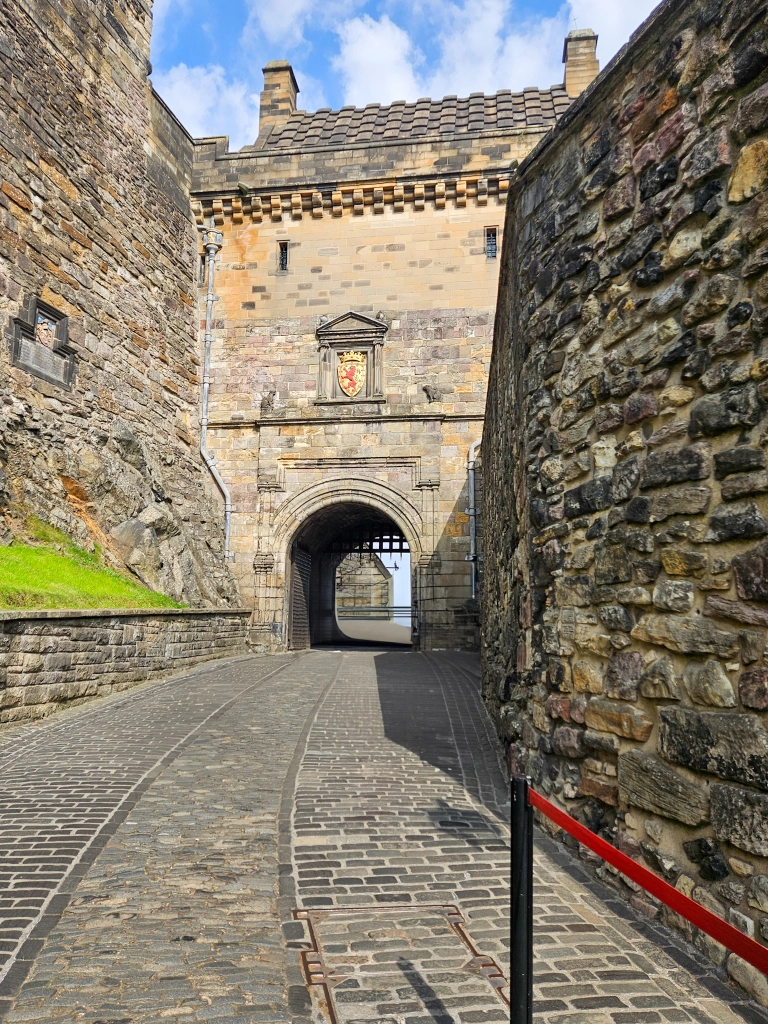
I spent an enjoyable, but not brilliant, 3.5hrs exploring Edinburgh Castle. I have to admit that by the end I felt fatigued and my patience was frayed. It’s such an historic and interesting site though, and really can’t be missed when on a trip to Edinburgh. Maybe I just got unlucky with crowds, heat and annoying groups.
What do you think of Edinburgh Castle? Let me know in the comments below. Stay safe and happy travelling!

